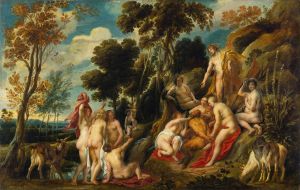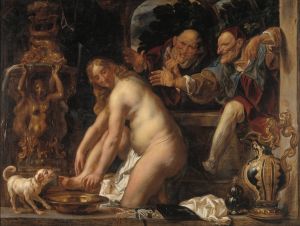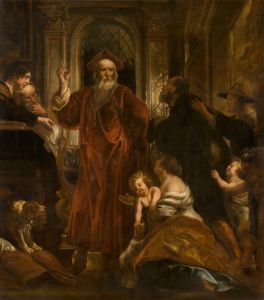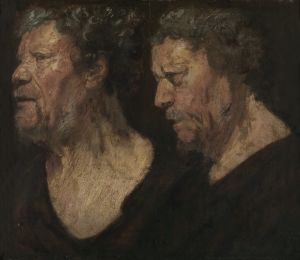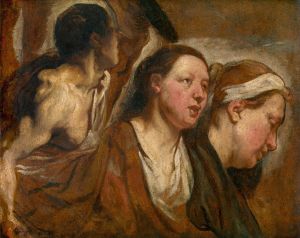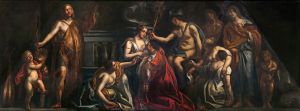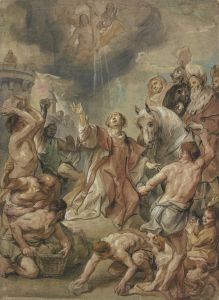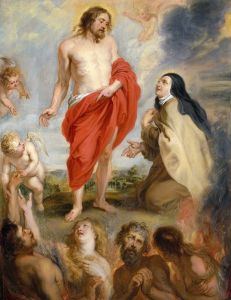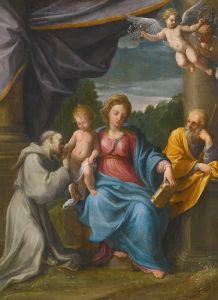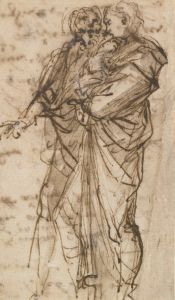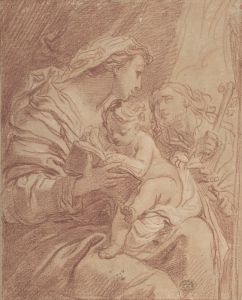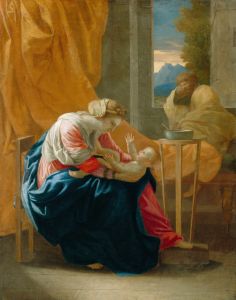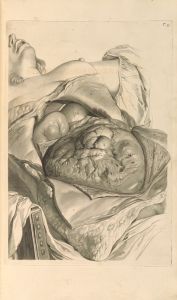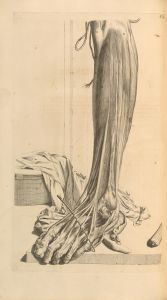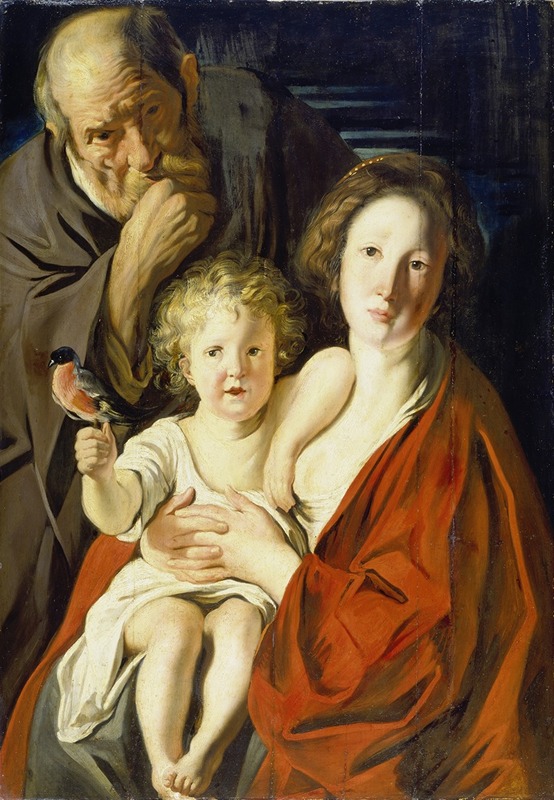
The Holy Family
A hand-painted replica of Jacob Jordaens’s masterpiece The Holy Family, meticulously crafted by professional artists to capture the true essence of the original. Each piece is created with museum-quality canvas and rare mineral pigments, carefully painted by experienced artists with delicate brushstrokes and rich, layered colors to perfectly recreate the texture of the original artwork. Unlike machine-printed reproductions, this hand-painted version brings the painting to life, infused with the artist’s emotions and skill in every stroke. Whether for personal collection or home decoration, it instantly elevates the artistic atmosphere of any space.
Jacob Jordaens, a prominent Flemish Baroque painter, created "The Holy Family," a work that exemplifies his mastery in depicting religious themes with a distinctive style. Jordaens was born in Antwerp in 1593 and became one of the leading figures in the Flemish Baroque movement, alongside contemporaries such as Peter Paul Rubens and Anthony van Dyck. Although Jordaens never traveled to Italy, unlike many of his peers, he was heavily influenced by the Italian Renaissance and Baroque styles, which he adapted to his own unique approach.
"The Holy Family" is a subject that has been explored by numerous artists throughout history, depicting the Virgin Mary, Saint Joseph, and the infant Jesus. Jordaens' interpretation of this theme is notable for its vibrant use of color, dynamic composition, and the warmth and humanity he brings to the figures. His work often reflects a strong sense of realism and attention to detail, characteristics that are evident in his portrayal of the Holy Family.
In this painting, Jordaens employs a rich palette and dramatic contrasts of light and shadow, a technique known as chiaroscuro, which was popular among Baroque artists. This use of light not only highlights the central figures but also adds a sense of depth and volume to the composition. The figures are typically rendered with a robust and earthy quality, a hallmark of Jordaens' style, which often imbues his religious subjects with a sense of accessibility and relatability.
Jordaens was known for his ability to convey emotion and narrative through facial expressions and body language. In "The Holy Family," the expressions of Mary and Joseph are tender and contemplative, reflecting their roles as the earthly parents of Jesus. The infant Jesus is often depicted with a sense of innocence and divinity, central to the theme of the Holy Family.
The setting of the painting is usually simple and domestic, emphasizing the humility and humanity of the Holy Family. This approach aligns with Jordaens' tendency to depict biblical scenes in a manner that was relatable to the common people of his time, often incorporating elements of Flemish domestic life into his works.
Jordaens' contribution to the Baroque period is significant, as he was able to blend the grandeur and drama of the Baroque with a more personal and intimate approach to religious subjects. His works, including "The Holy Family," are celebrated for their lively compositions, rich color schemes, and the ability to convey complex theological themes in a manner that was both engaging and accessible to a wide audience.
"The Holy Family" by Jacob Jordaens remains an important example of Flemish Baroque art, showcasing the artist's skill in combining traditional religious iconography with his own distinctive style. Jordaens' work continues to be studied and appreciated for its artistic merit and its contribution to the broader narrative of European art history.





